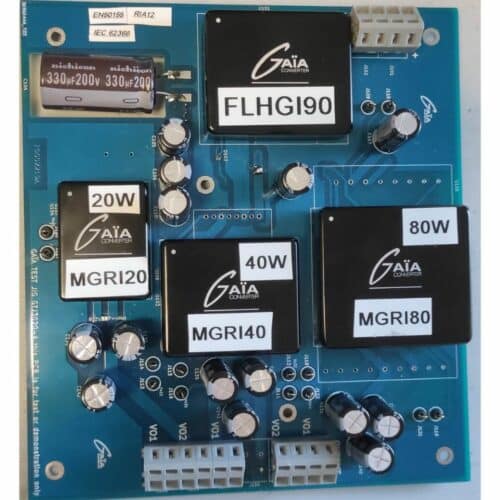GAIA Converter has introduced a selection of DC-DC converters specifically designed to cater to the ever-changing requirements of railway infrastructure.

GAIA Converter, a leading power solutions provider, has introduced a new range of industrial-grade wide-input DC-DC converters, which the company claims to be highly reliable and specifically designed for rail applications to meet the evolving demands of railway infrastructure. The DC-DC converters offer exceptional mean time between failures (MTBF) performance while meeting stringent surge requirements. This enables a nearly seamless modular architecture that spans from 5W to 500W. The company claims to introduce a new ultra-wide input range spanning from 12V to 160VDC for each part. This range includes popular nominals such as 24V, 48V, 72V, 96V, and 110VDC to comply with European Norm (EN) 50155 and other rail specifications and standards for typical industrial applications.
The company claims that the input of the DC-DC converters is designed to withstand a surge of 176VDC for 100ms. Additionally, the parts can handle surges up to 385VDC for 20ms, as per the Railway Industry Association specification 12 (RIA12). Each model offers multiple output options, including 2 x 5V, 2 x 12V, or 2 x 15V, which are mutually isolated. These outputs can be paralleled for higher current, connected in series for higher voltages, or configured as +/- bipolar outputs for maximum flexibility. The efficiency of the converters is typically 87%, and the operating temperature range of the case extends from -40°C to +105°C without derating. The output power only derates by 25% for input voltages lower than 36VDC.
The press release highlights that the control functions of the converters comprise an on/off pin and output trim, allowing for adjustment of the outputs within a range of -20% to +10%. Protection features integrated into the converters include overload protection, short-circuit protection, soft-start functionality, and input under-voltage lock-out with a trimmable threshold. These protection features are designed to cater to various battery voltage standards. Each converter is housed in a fully potted low-profile metallic case, with dimensions as follows: 35mm x 30mm x 10mm for the 20W part, 46mm x 36mm x 10mm for the 40W part, and 50mm x 44mm x 12.9mm for the 80W part.
Christian Jonglas of GAIA Converter comments: “These high reliability and power-dense converters build on our range of board-mount products for critical applications, where the extra-wide input and reinforced isolation are real advantages. They are ideal for rail applications and in industry, where a single part can be stocked for multiple input voltage nominals”.







What is the MTBF?
MTBF stands for Mean Time Between Failures. It is a measure used to estimate the average time between failures of a system, component, or equipment. MTBF is typically calculated by dividing the total operating time by the number of failures that occur within that time period. It is often expressed in hours and is used to assess the reliability and availability of a system. A higher MTBF value indicates a longer average time between failures, which generally implies a more reliable and stable system.
“The DC-DC converters offer exceptional mean time between failures (MTBF) performance while meeting stringent surge requirements.”
What is the MTBF for this DC-DC converter?